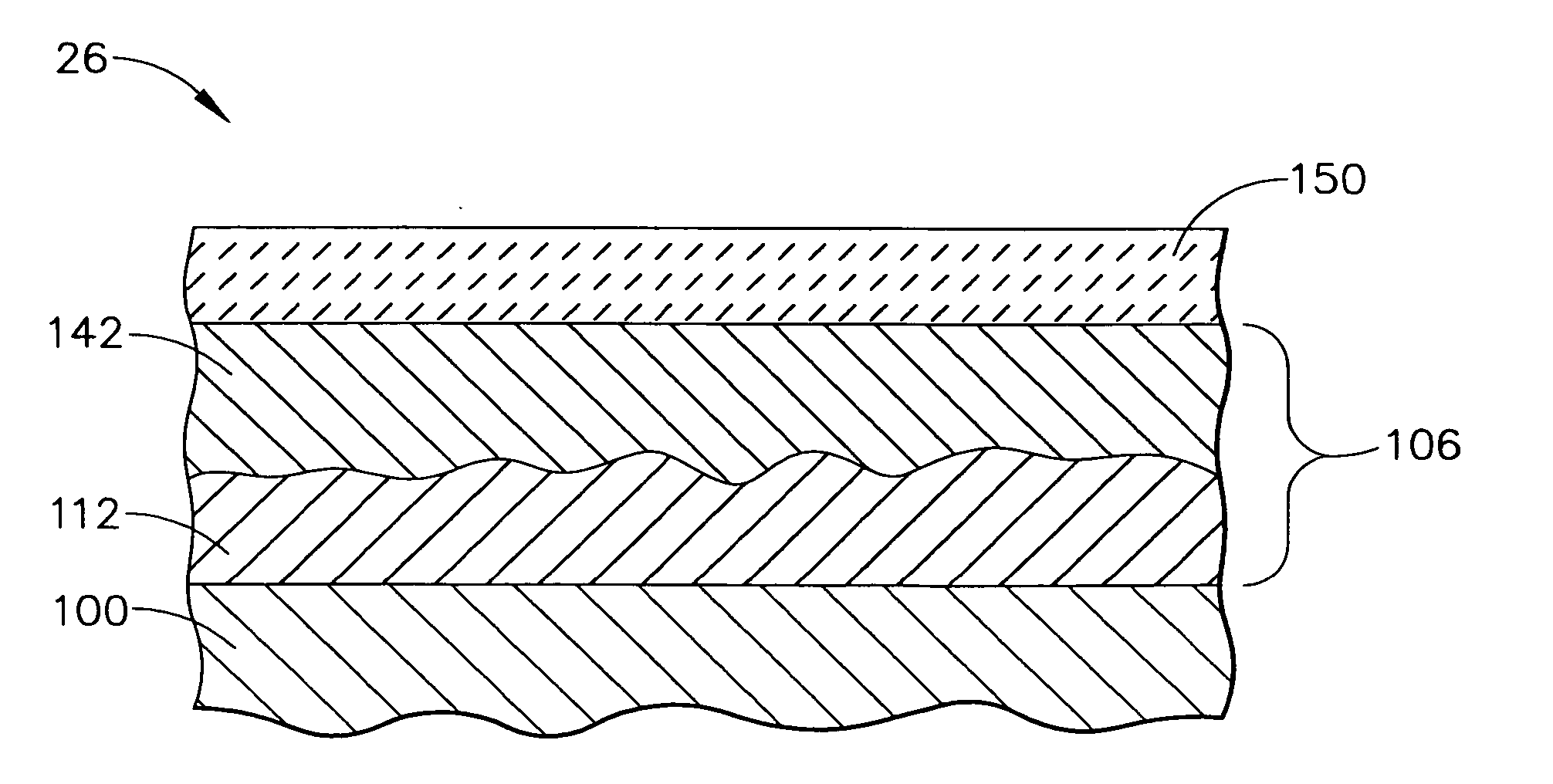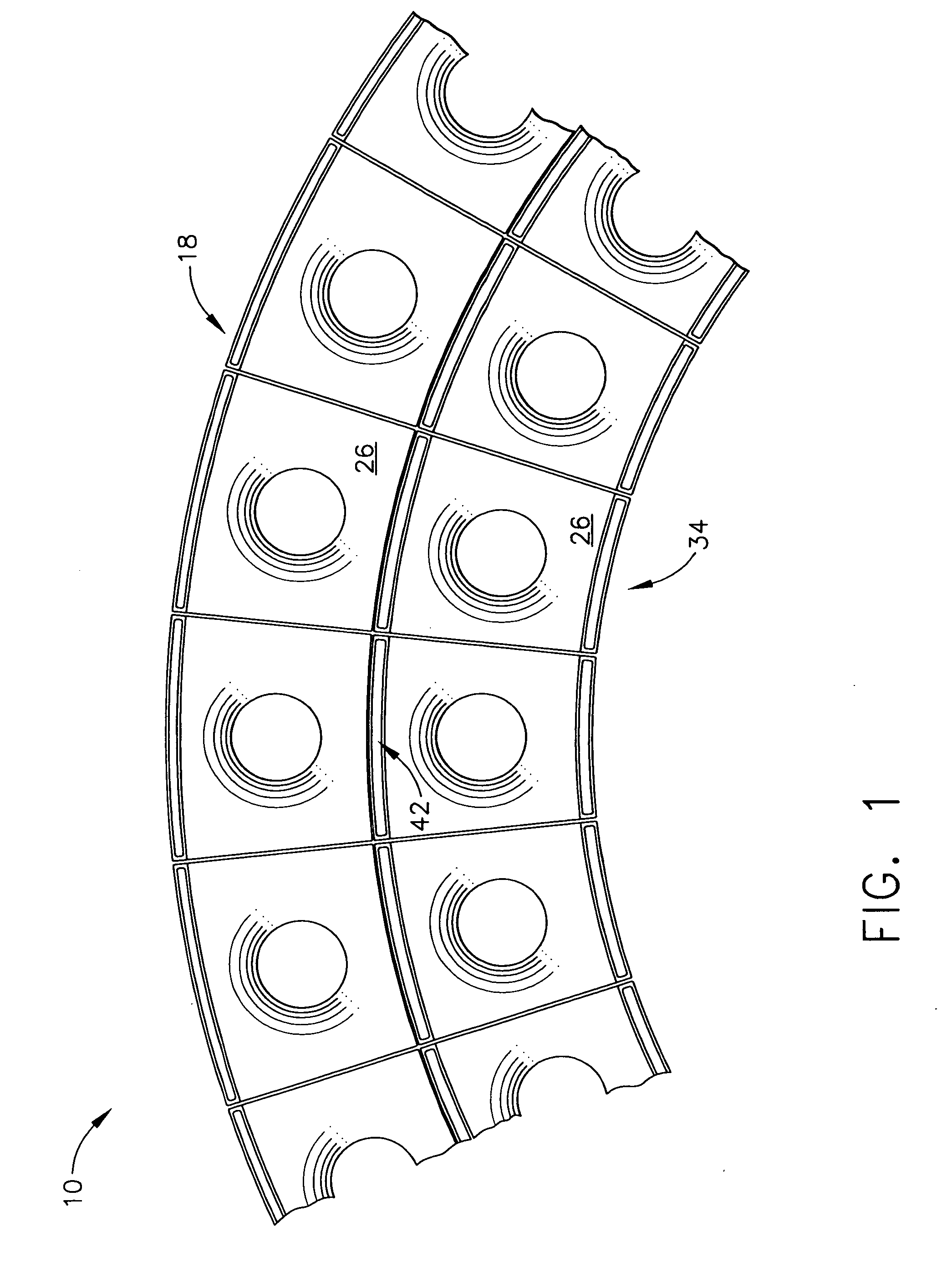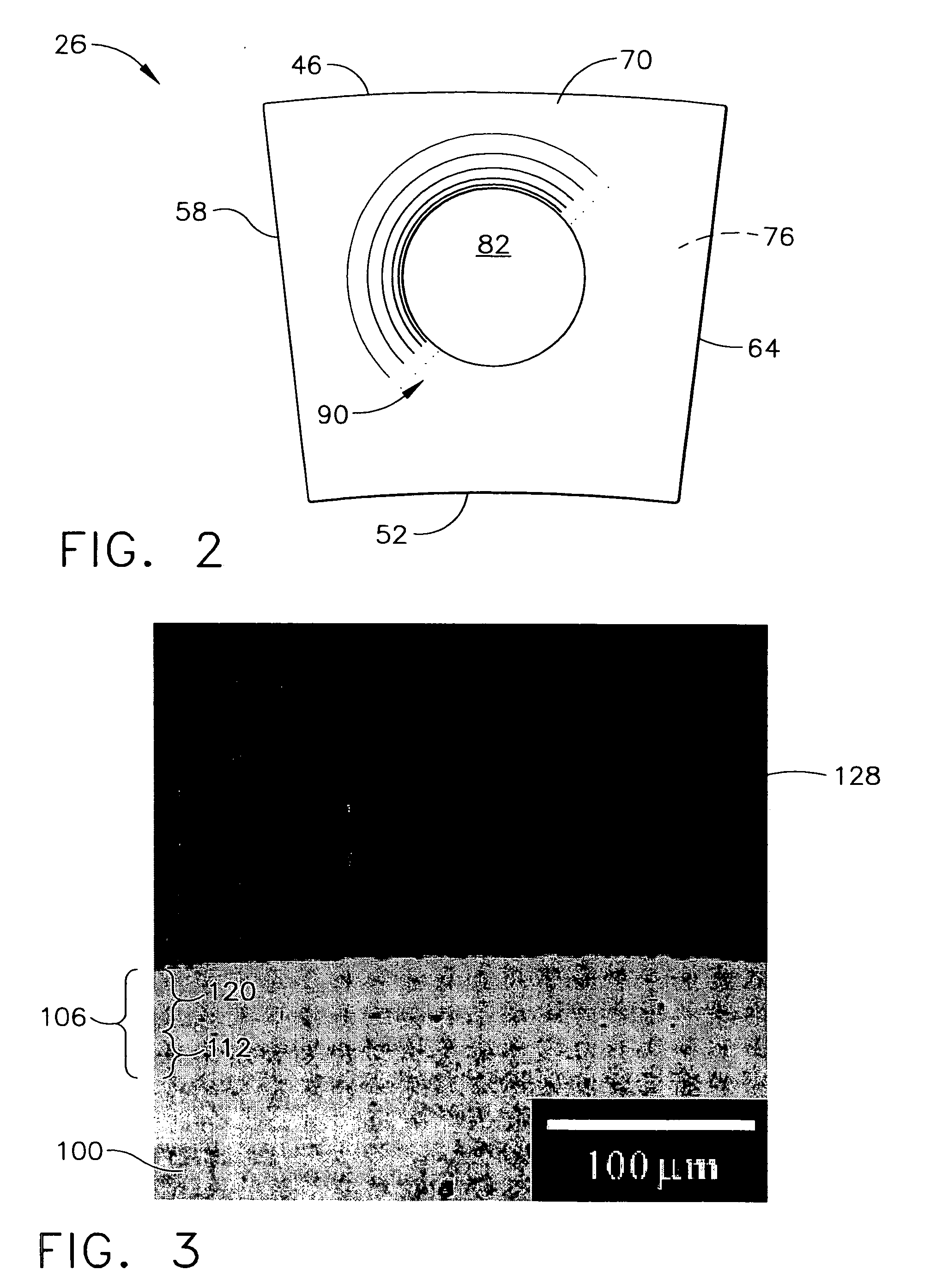Method for applying or repairing thermal barrier coatings
a thermal barrier and coating technology, applied in the direction of superimposed coating process, machines/engines, transportation and packaging, etc., can solve the problems of less flexible physical vapor deposition techniques and the way in which they are typically carried ou
- Summary
- Abstract
- Description
- Claims
- Application Information
AI Technical Summary
Benefits of technology
Problems solved by technology
Method used
Image
Examples
Embodiment Construction
[0025] As used herein, the term “ceramic thermal barrier coating materials” refers to those coating materials that are capable of reducing heat flow to the underlying metal substrate of the article, i.e., forming a thermal barrier and usually having a melting point of at least about 2000° F. (1093° C.), typically at least about 2200° F. (1204° C.), and more typically in the range of from about 2200° to about 3500° F. (from about 1204° to about 1927° C.). Suitable ceramic thermal barrier coating materials for use herein include, aluminum oxide (alumina), i.e., those compounds and compositions comprising Al2O3, including unhydrated and hydrated forms, various zirconias, in particular chemically stabilized zirconias (i.e., various metal oxides such as yttrium oxides blended with zirconia), such as yttria-stabilized zirconias, ceria-stabilized zirconias, calcia-stabilized zirconias, scandia-stabilized zirconias, magnesia-stabilized zirconias, india-stabilized zirconias, ytterbia-stabili...
PUM
| Property | Measurement | Unit |
|---|---|---|
| thickness | aaaaa | aaaaa |
| thickness | aaaaa | aaaaa |
| thickness | aaaaa | aaaaa |
Abstract
Description
Claims
Application Information
 Login to View More
Login to View More - R&D
- Intellectual Property
- Life Sciences
- Materials
- Tech Scout
- Unparalleled Data Quality
- Higher Quality Content
- 60% Fewer Hallucinations
Browse by: Latest US Patents, China's latest patents, Technical Efficacy Thesaurus, Application Domain, Technology Topic, Popular Technical Reports.
© 2025 PatSnap. All rights reserved.Legal|Privacy policy|Modern Slavery Act Transparency Statement|Sitemap|About US| Contact US: help@patsnap.com



